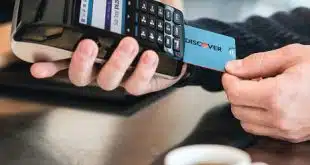Apple Inc. chief executive Tim Cook said Monday that nearly 700,000 U.S. merchant locations now accept the Apple Pay mobile-payment service, compared with the 220,000 locations reported to have accepted the service when it launched last October.
Since Apple Pay relies on near-field communication (NFC) contactless technology to enable Apple’s iPhone 6 and iPhone 6 Plus smart phones to communicate with NFC-capable point-of-sale terminals, Cook’s disclosure appears to signal that contactless payments are undergoing a rapid ramp-up as the U.S. converts to EMV chip card payments.
“We’ve tripled the number of locations that are accepting Apple Pay to nearly 700,000 across the U.S.,” Cook said during an event in which Apple unveiled its long-anticipated Apple Watch, a wearable computing device that, like the recently introduced iPhone 6 models, also is enabled for Apple Pay.
Exactly how Apple defines a “location” remains unclear. A spokesperson for the Cupertino, Calif.-based computing giant did not respond to an inquiry on the matter from Digital Transactions News. Some industry experts interpret the word, in this case, to apply to acceptance terminals.
A slide in Cook’s presentation said that “hundreds of thousands” of the Apple Pay acceptance locations are vending machines. USA Technologies Inc., a Malvern, Pa.-based firm that outfits vending machines for wireless payments, supports Apple Pay, as do some vending machine operators. A Coca-Cola distributor currently has 40,000 machines enabled for Apple Pay and plans to have 100,000 ready by year’s end, according to Cook.
Another slide showing Apple Pay’s earliest merchant acceptors displayed 29 corporate brands, but the next slide displayed 84. Six big banks had signed on to support Apple Pay at the launch, but that number has now grown to 2,500 financial institutions. “Apple Pay has forever changed the way we pay for things,” Cook said. “And it’s gotten off to the most amazing start and has enormous momentum.”
The 700,000 locations amount to less than 10% of the U.S. payment-card-accepting merchant base, but many merchant-acquiring executives expect contactless payments to grow rapidly as the U.S. converts from magnetic-stripe payment cards to EMV chip cards. A major deadline looms in October with a so-called liability shift that will make an issuer or acquirer that doesn’t support EMV responsible for counterfeit fraud.
EMV comes in two major varieties for in-store payments: so-called “contact” transactions, in which a chip card is inserted, or “dipped,” into a POS terminal, and contactless payments, in which an EMV card or EMV-compliant smart phone is passed close to an EMV terminal. Most card issuers are expected to issue contact cards in EMV’s early going, rather than dual-interface cards that support both types of payments but cost more than contact-only cards.
Meanwhile, acquirers say many of the POS terminals being sold nowadays can support both types of EMV transactions, but that doesn’t mean the merchant has the contactless functionality turned on. And many of the locations that did accept contactless payments before the U.S. EMV conversion started in earnest over the past year did not generate transactions that support the EMV cryptogram, according to Stephanie Ericksen, vice president of risk products at Visa Inc.
But Ericksen believes the number of EMV-compliant contactless transactions is bound to rise as merchants turn on the contactless capabilities of their new chip card-reading terminals, issuers gradually offer more dual-interface cards, and more NFC-enabled smart phones hit the market.
“As we move forward, merchants will want to support dual interface,” Ericksen tells Digital Transactions News. “We’re in a bit of a hybrid environment.”






